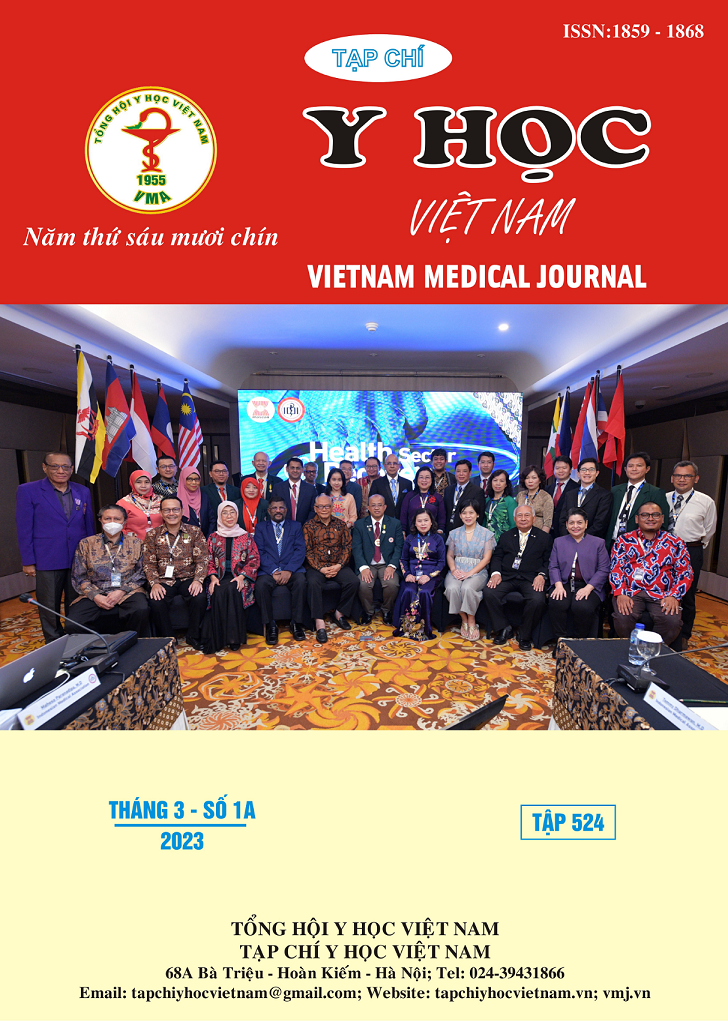CLINICAL AND RADIOLOGY CHARACTERISTICS OF SURGICAL PATIENTS CAUSED BY C1-C2 INSTABILITY IN BACH MAI HOSPITAL
Main Article Content
Abstract
Objective: To evaluate the clinical and paraclinical characteristics of patients with C1-C2 instability who underwent surgery at Bach Mai hospital. Subjects and methods: Retrospective study of 34 patients diagnosed with C1-C2 instability operated by different surgical techniques from October 2017 to October 2019 at Bach Mai Hospital. Results: The average age of the study group was 47.77; men were more than two times older than women. The most common cause of injury is a new injury, with 38.24%. 100% of patients underwent magnetic resonance imaging, of which 55.88% had cervical spinal stenosis at C1-C2 region; 44.12% of patients had increased signal in the medulla in T2W, combine with weakness in extremities. Conclusion: The clinical presentation in C1-C2 instability is feeble and non-specific; the C1-C2 region injury should be considered when the patient had neck pain and neck movement limited in a patient with a traumatic history. The characteristics of spinal signal changes on magnetic resonance help determine the degree of nerve damage and predict postoperative recovery.
Article Details
Keywords
C1-C2 instability, clinical of C1-C2 instability, radiology of C1-C2 instability
References
2. Howard S. An. Anatomy and Surgical Approaches to the spine. Surgery of spine trauma. 2000; chapter 1:10-11.
3. Donal Schreiber. Spinal cord Injuries. Emedicine, http://wwwemedicinemedscapecom/ article/793582-overview. 2009.
4. Campbell WI, Lewis S. Visual analogue measurement of pain. The Ulster medical journal. Oct 1990; 59(2):149-54.
5. Alexander R. Vaccaro. Fractures of the cervical, thoracic and lumbar spine. Marcel Dekker, Inc; 2002.
6. Finn M.A., Apfelbaum R.I. Atlantoaxial transarticular screw fixation: update on technique and outcomes in 269 patients. Neurosurgery. Mar 2010; 66(3 Suppl):184-92. doi:10.1227/01. NEU. 0000365798.53288.A300006123-201003001-00023 [pii]
7. Trung HK. Nghiên cứu chẩn đoán và điều trị phẫu thuật các tổn thương mất vững của cột sống cổ cao. Tạp chí Ngoại Khoa Việt Nam. 2005;1:34 - 38.
8. Trung HK. Nghiên cứu chẩn đoán và phẫu thuật chấn thương cột sống cổ có thương tổn thần kinh tại Bệnh viện Việt Đức. Luận án tiến sĩ y học - Trường Đại học Y Hà Nội. 2005.
9. Đức PM. Điều trị phẫu thuật bắt vít khối bên C1 và chân cung C2 trong gãy mấu răng mất vững. Tạp chí Y học thực hành. 2011; 56(779 + 780): 511 - 518.
10. Takahashi M., Sakamoto Y., Miyawaki M., Bussaka H. Increased MR signal intensity secondary to chronic cervical cord compression. Neuroradiology. 1987;29(6):550-6.


